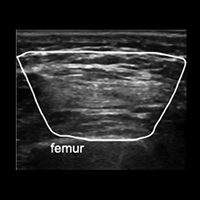Respiratory and peripheral muscle involvement in patients with pulmonary arterial hypertension due to congenital heart diseases

Submitted: August 6, 2020
Accepted: December 1, 2020
Published: March 31, 2021
Accepted: December 1, 2020
Abstract Views: 1029
PDF: 548
Publisher's note
All claims expressed in this article are solely those of the authors and do not necessarily represent those of their affiliated organizations, or those of the publisher, the editors and the reviewers. Any product that may be evaluated in this article or claim that may be made by its manufacturer is not guaranteed or endorsed by the publisher.
All claims expressed in this article are solely those of the authors and do not necessarily represent those of their affiliated organizations, or those of the publisher, the editors and the reviewers. Any product that may be evaluated in this article or claim that may be made by its manufacturer is not guaranteed or endorsed by the publisher.
Similar Articles
- Shekhar Kunal, Vijay Pathak, Keshav Pathak, Monika Mishra, Shashi Mohan Sharma, Sudhir Bhandari, Very late stent thrombosis associated with COVID-19 infection: a case report and review of the literature , Monaldi Archives for Chest Disease: Vol. 92 No. 2 (2022)
- Christopher Ull, Mirko Aach, Josef Reichert, Thomas Armin Schildhauer, Justyna Swol, Successful non-surgical management of pleuroparenchymal fistula following cervical intraspinal empyema , Monaldi Archives for Chest Disease: Vol. 88 No. 1 (2018)
- Irappa Madabhavi, Malay Sarkar, Nagaveni Kadakol, COVID-19: a review , Monaldi Archives for Chest Disease: Vol. 90 No. 2 (2020)
- Diana Alexandra Gonçalves Pimenta, Renata Carvalho, Raquel Pereira, Rui Rolo, Lurdes Ferreira, Interstitial nephritis secondary to treatment with pembrolizumab, a rare complication in two patients with lung adenocarcinoma , Monaldi Archives for Chest Disease: Vol. 93 No. 2 (2023)
- Debapriya Maji, Upasna Agarwal, Lokender Kumar, Vinay V, Amit Sharma, Clinicodemographic profile and outcome of tuberculosis treatment in TB-HIV co-infected patients receiving daily ATT under a single window TB-HIV services delivery initiative , Monaldi Archives for Chest Disease: Vol. 93 No. 3 (2023)
- Garyfallia Pepera, Εfstratios Xanthos, Andreas Lilios, Theodoros Xanthos, Knowledge of cardiopulmonary resuscitation among Greek physiotherapists , Monaldi Archives for Chest Disease: Vol. 89 No. 3 (2019)
- Massimiliano Polastri, Giulia Zagnoni, Antonio Loforte, Basic movements for postoperative exercise in patients with left ventricular assist devices , Monaldi Archives for Chest Disease: Vol. 89 No. 1 (2019)
- Carlo Vigorito, Pompilio Faggiano, Gian Francesco Mureddu, COVID-19 pandemic: what consequences for cardiac rehabilitation? , Monaldi Archives for Chest Disease: Vol. 90 No. 1 (2020)
- The Publisher, Correction. Robotic resection of mediastinal left vagus neurofibroma , Monaldi Archives for Chest Disease: Vol. 93 No. 1 (2023)
- Mario Tamburrini, Parikshit Thakare, Francesca Zampieri, Angelo Scarda, Alessandra Di Paolo, Giancarlo De Leo, Enrico Gianfagna, Lucia Vietri, Umberto Zuccon, A case report on expanding horizon of endobronchial ultrasound through esophagus , Monaldi Archives for Chest Disease: Vol. 90 No. 3 (2020)
<< < 92 93 94 95 96 97 98 99 100 101 > >>
You may also start an advanced similarity search for this article.

 https://doi.org/10.4081/monaldi.2021.1551
https://doi.org/10.4081/monaldi.2021.1551





